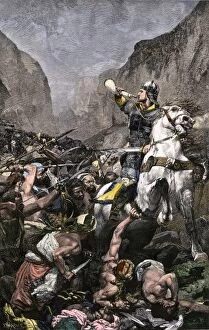700s Collection
In the vibrant and eventful 700s, a tapestry of history unfolded, weaving together diverse cultures and remarkable individuals. From the intricate illustrations of St
All Professionally Made to Order for Quick Shipping
In the vibrant and eventful 700s, a tapestry of history unfolded, weaving together diverse cultures and remarkable individuals. From the intricate illustrations of St. Matthew in the Book of Kells to David's melodious tunes resonating from his harp, artistry flourished across lands. Amidst this era, Saint Boniface emerged as a beacon of faith, spreading Christianity with unwavering dedication. Meanwhile, Charlemagne ascended to power and left an indelible mark on Europe through his visionary leadership. The epic tales echoed through time as scenes from the Song of Roland captivated audiences with their valorous knights and heroic deeds. The Battle of Tours in 732 A. D witnessed the resounding defeat of Saracens, altering the course of history forever. Within royal courts adorned with opulence and grace, Charlemagne stood alongside Queen Hildegard - their partnership symbolizing strength and unity amidst turbulent times. Across borders, Geber illuminated Islamic Spain as an alchemist extraordinaire - unraveling secrets hidden within nature's embrace. And while exploring ancient civilizations like Moche Epoch revealed captivating erotic sculptures that celebrated human desire without inhibition. As we delve deeper into this rich tapestry of events unfolding during the 700s, we witness King David being anointed with oil - a symbolic act signifying divine favor bestowed upon him. And even beyond Egypt's borders under Islamic Umayyad rule thrived Alexander Great on horseback - leaving behind a legacy that transcends time itself. They were indeed an era brimming with artistic brilliance, religious fervor, political upheaval, and cultural exchange, and is within these historical threads that we find inspiration for our present-day journey towards understanding our collective past and shaping our future endeavors.





























